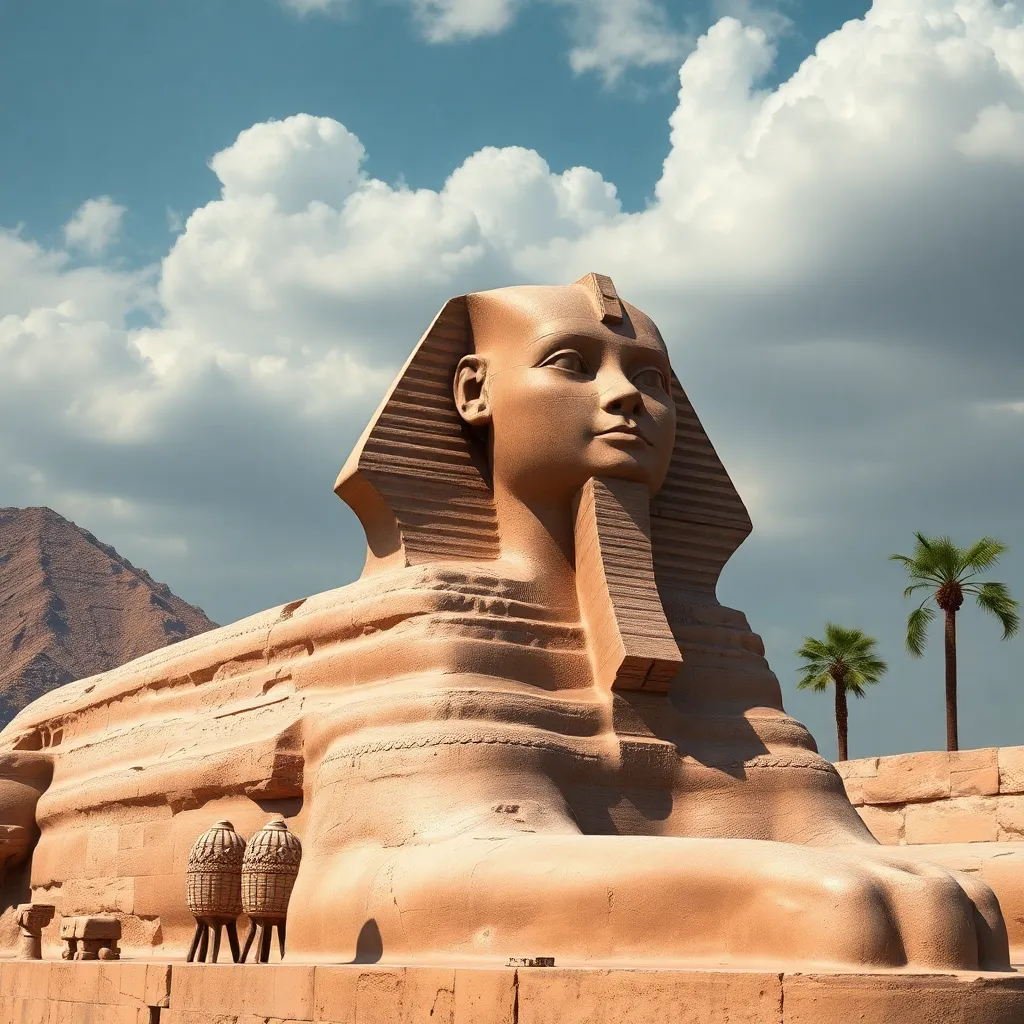The Sphinx: A Guardian of the Ancient World
I. Introduction
The Great Sphinx of Giza stands as one of the most iconic symbols of ancient Egypt, a testament to the civilization’s architectural and artistic prowess. This enigmatic statue, with the body of a lion and the head of a human, holds great significance in the annals of history, embodying the mysteries and grandeur of a bygone era. Located on the Giza Plateau, adjacent to the Great Pyramids, the Sphinx commands attention with its immense size and intriguing expression.
The purpose of this article is to explore the Sphinx’s multifaceted role and symbolism, delving into its historical context, architectural marvel, and its lasting impact on culture and society.
II. Historical Context
The Sphinx was constructed during the Old Kingdom of Egypt, a period marked by remarkable achievements in art and architecture. Most scholars believe that it was built around 2500 BC, during the reign of Pharaoh Khafre, who is also credited with the construction of the second pyramid at Giza.
There are various theories regarding the Sphinx’s purpose and significance. Some suggest that it served as a guardian of the Giza Plateau, while others propose it was a representation of the pharaoh himself, embodying his divine power. Its strategic positioning within the broader landscape of Giza, facing the rising sun, further emphasizes its potential role as a solar deity.
III. Architectural Marvel
The Sphinx measures approximately 73 meters (240 feet) in length and stands about 20 meters (66 feet) tall, making it one of the largest and oldest monolithic statues in the world. Its design, with a lion’s body and a human head, is not only visually striking but also rich in symbolic meaning.
- Materials Used: The Sphinx is carved from limestone, a material abundant in the region, which was also used for the construction of the pyramids.
- Construction Techniques: The precise methods employed in carving and erecting the Sphinx remain a topic of scholarly debate, but it likely involved a combination of skilled labor and primitive tools.
When compared to other monumental structures in ancient Egypt, the Sphinx stands out due to its unique hybrid design and its solitary location, emphasizing its importance as a guardian figure.
IV. Symbolism and Meaning
The Sphinx embodies strength and protection, often interpreted as a guardian of sacred spaces. Its imposing figure was meant to intimidate intruders and offer protection to the pharaoh’s tombs nearby.
Several interpretations of the Sphinx’s features and posture exist:
- Facial Expression: The serene yet powerful expression of the Sphinx is often considered a representation of wisdom and authority.
- Posture: The reclining position of the Sphinx suggests a state of vigilance, always ready to protect and serve.
In ancient Egyptian mythology, the Sphinx is associated with the sun god Ra and the pharaohs, reinforcing its status as a divine protector.
V. The Sphinx in Art and Literature
The Sphinx has been depicted in various forms of ancient Egyptian art, including statues, reliefs, and hieroglyphs. These representations often highlight its majestic features and the reverence with which it was regarded.
Throughout history, the Sphinx has influenced later cultures and literature:
- In Greek mythology, the Sphinx is portrayed as a creature that posed riddles to travelers, symbolizing the enigma of knowledge.
- Modern media references include films, books, and video games, where the Sphinx appears as a symbol of mystery and ancient wisdom.
VI. Preservation and Conservation Efforts
Despite its monumental stature, the Sphinx faces numerous challenges in preservation. Factors such as pollution, erosion, and tourism have taken a toll on its condition.
Historical restoration efforts have aimed to mitigate damage and restore the Sphinx’s original grandeur:
- In the 20th century, significant restoration projects were undertaken to stabilize the structure and address erosion.
- Modern conservation initiatives focus on monitoring environmental impacts and implementing protective measures.
These efforts are vital for ensuring that the Sphinx remains a testament to ancient Egyptian civilization for future generations.
VII. The Sphinx in Modern Culture
Today, the Sphinx serves as a major tourist attraction, drawing millions of visitors each year. Its economic impact on the region is significant, contributing to the local economy through tourism-related activities.
In popular culture, the Sphinx continues to capture the imagination:
- It appears in various films, literature, and artwork, often symbolizing ancient wisdom and mystery.
- Public perceptions of the Sphinx can vary, with some viewing it as a mere tourist site, while others appreciate its historical and cultural significance.
VIII. Conclusion
The Great Sphinx of Giza is more than just an ancient monument; it is a guardian of history, embodying the spirit of an extraordinary civilization. Its enduring legacy continues to inspire awe and curiosity, reminding us of the achievements of the ancient Egyptians.
As we reflect on the Sphinx’s role in history, it is essential to appreciate and protect this ancient wonder for future generations, ensuring that its mysteries continue to be explored and celebrated.




